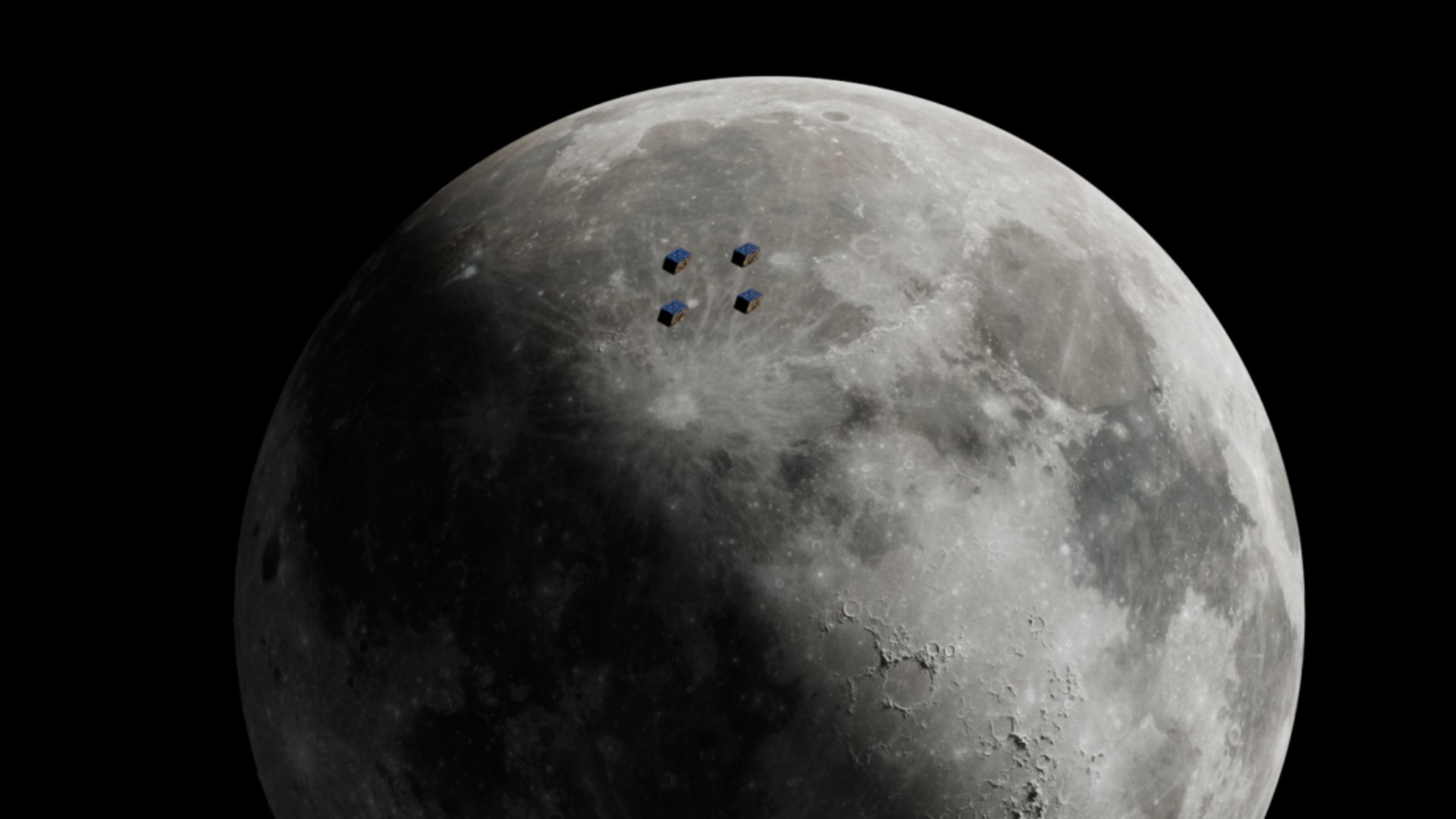Space
Sort Options:

Hacking in Space: Not as Tough as You Might Think
Barbara Grofe, a space asset security architect at Spartan Corp, highlights the pressing realities of hacking in space, emphasizing that the challenges are far from theoretical and require serious attention in today's technological landscape.

Blue Skies Space to build satellite fleet around the moon to map the ancient universe
A fleet of innovative cubesats is set to function as a radio telescope, aiming to map the enigmatic cosmic Dark Ages. This groundbreaking project promises to enhance our understanding of the universe's early history and its formation.

A Lightless Galaxy: Scientists Discover a Starless, Spinning Ghost
A fast-moving gas cloud may provide insights into the missing satellite problem, potentially confirming scientists' theories about its nature. This discovery could reshape our understanding of cosmic structures and their formation in the universe.

NASA Wants to Track Earth’s Gravity With a Cloud of Floating Atoms in Space
A groundbreaking suitcase-sized quantum sensor promises to uncover hidden resources like water and oil, as well as detect underground geological formations, by monitoring atomic behavior. This innovative technology could revolutionize exploration and resource management.

SQS and Space ISAC Launch Quantum Testbed in Colorado Springs; SQS and Vescent to Demo Quantum Communications at Space Symposium
Secured Quantum Services and Space ISAC have launched the Quantum Testbed & Proving Ground in Colorado Springs, providing a controlled environment for validating quantum technologies. This initiative supports diverse organizations, from startups to government agencies, in advancing quantum innovations.

Commercial space station outfit plans two Orbital Data Center nodes by the end of 2025
Axiom Space plans to launch two Orbital Data Center nodes to low Earth orbit by the end of 2025, marking a significant advancement in space-based data management. This initiative highlights the growing importance of space infrastructure in technology.

GomSpace and Neuraspace partner to advance satellite collision avoidance
GomSpace, a Danish small satellite manufacturer, has partnered with Portugal's Neuraspace to enhance its satellite operations platform with space traffic management tools, aiming to improve collision avoidance in increasingly crowded orbits.

Space has a communications problem
The article from SpaceNews discusses the significant communication challenges facing space exploration. It highlights the need for innovative solutions to enhance connectivity and data transmission in the ever-expanding realm of space missions and technology.

Hyperspace now reclaims storage without deleting files from some of your largest data buckets
Hyperspace, developed by Macintosh veteran John Siracusa, has received several updates since its February launch, introducing new features that enhance its utility and offer users additional space reclamation options. Explore the latest enhancements to maximize your experience.
![[$] Page allocation for address-space isolation](/assets/img/article-default.jpg)
[$] Page allocation for address-space isolation
At the 2025 Linux Summit, Brendan Jackman discussed address-space isolation's potential to enhance kernel security against vulnerabilities. He sought feedback from the memory-management community on necessary changes for effective implementation while maintaining performance.

Digital Twin Consortium outlines spatially intelligent capabilities and characteristics
Summary Not Available
![[$] Multiple memory classes for address-space isolation](/assets/img/article-default.jpg)
[$] Multiple memory classes for address-space isolation
Brendan Jackman is proactively addressing future CPU vulnerabilities with a new patch introducing address-space isolation (ASI). While still in development and facing performance challenges, this innovative approach is expected to be a key topic at the 2025 Linux Summit.

Hyperspace 1.1
John Siracusa's new Mac app, Hyperspace, efficiently identifies and manages duplicate files, reclaiming disk space without deletion. The app leverages macOS's space-saving clones, showcasing Siracusa's expertise and attention to detail in its design and documentation.

Space and power constrain datacentre planning
Summary Not Available

Cognitive Space claims two SDA awards
Cognitive Space has secured two awards from the Space Development Agency to enhance missile tracking and optimize network routing. This collaboration aims to advance capabilities in space technology and defense systems, as reported by SpaceNews.

TOSI
The article explores advancements in online space intelligence, highlighting innovative technologies and strategies that enhance data collection and analysis. The authors emphasize the importance of these developments for future space exploration and research initiatives.

Should we be moving data centers to space?
Lonestar Data Holdings has launched a groundbreaking device to test lunar data storage, aiming to alleviate Earth’s data center challenges. The initiative highlights the potential for secure, efficient data management in space, paving the way for future digital infrastructure on the moon.